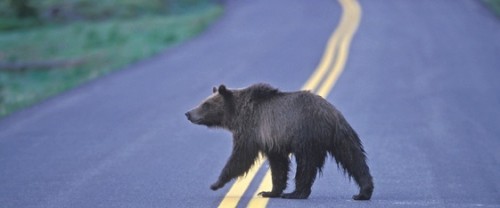Changes to landscapes as a result of human activities often result in habitat fragmentation. Habitat fragmentation not only results in smaller habitat patches and greater distance between those patches, but can also affect movement of organisms between the remaining fragments. Decreasing the ability of organisms to move between patches can have negative effects on the population, as well as potentially threatening the long-term persistence of a given species. Designing reserves and connecting existing habitat patches are a couple ways to mitigate the negative effects of habitat fragmentation. One means that is used to connect habitat fragments is the establishment of landscape corridors. Landscape corridors are areas of land between habitat fragments that are used to promote the movement of organisms between patches. Corridors can take on a number of shapes and forms, which depend on the movement requirements of the organisms that land managers are trying to promote or restore the movement of. In this lesson, we will discuss why habitat area and reserve design are important. Beginning with preservation of habitat patches, we will discuss how the area of a habitat patch is an important consideration when deciding whether or not to invest resources (e.g., money) in a particular patch to preserve it. We will then discuss the importance of movement between habitat patches and provide examples of the creative ways that scientists and land managers establish or preserve corridors for movement. The lesson concludes with an activity where students are challenged to engineer the best disperser for given environment types, specifically an artificial wind-dispersed seed in windy and calm environments.
At the conclusion of the lesson, students will be able to:
- Explain why habitat area is important for survival of organisms
- Interpret graphs relating to habitat area, species richness, and extinction rates
- Understand that habitat fragmentation affects movement of organisms
- Provide examples of ways that humans can establish corridors to promote movement between fragments
- Explain the ways that different organisms have different requirements for moving through landscapes
Resources:
- Lesson Plan
- Powerpoint (pdf – reduced file size)
- Area Effects worksheet
- Design the Best Disperser activity instructions
Lesson Plan created by GK-12 Fellows Emily Dittmar & Dani Fegan, 2014

